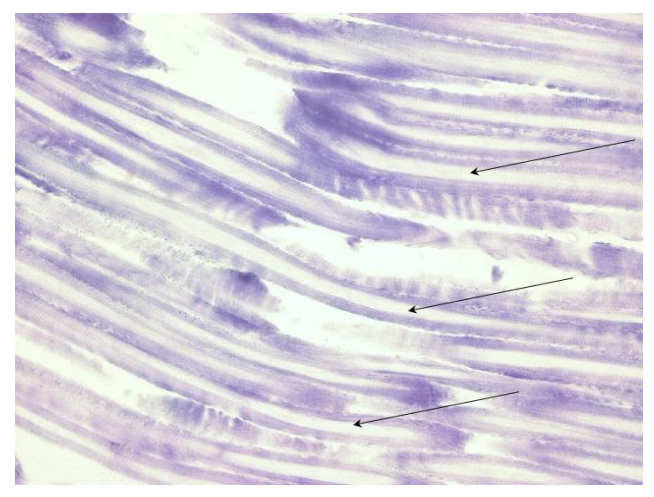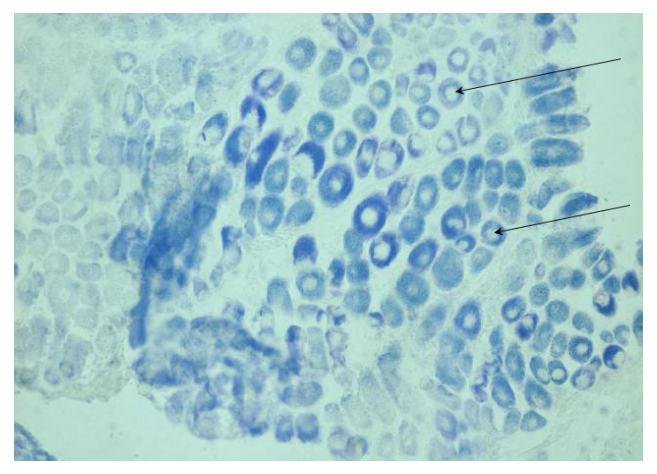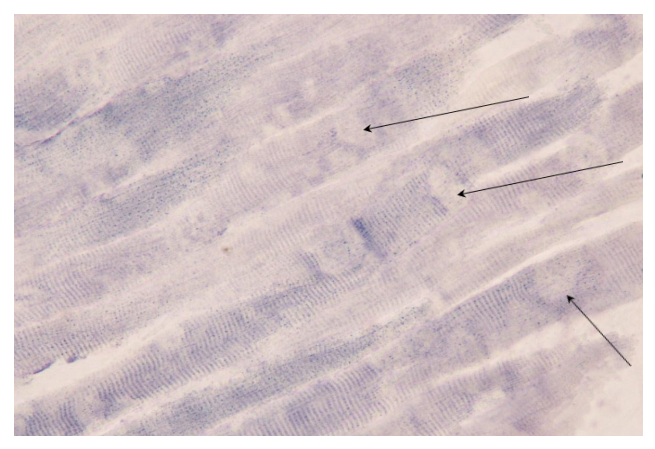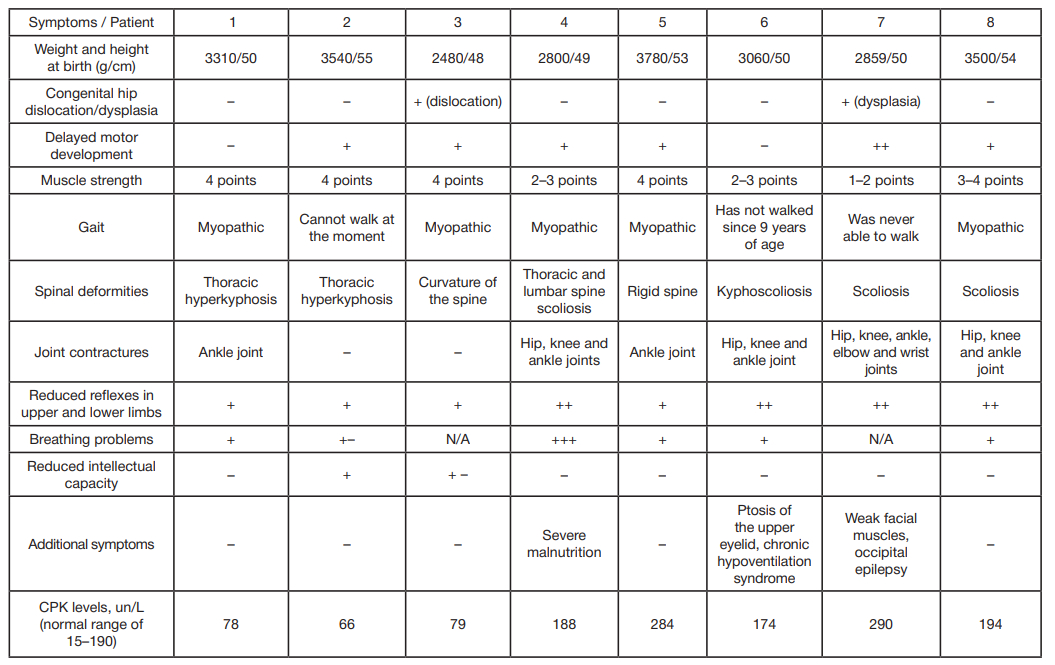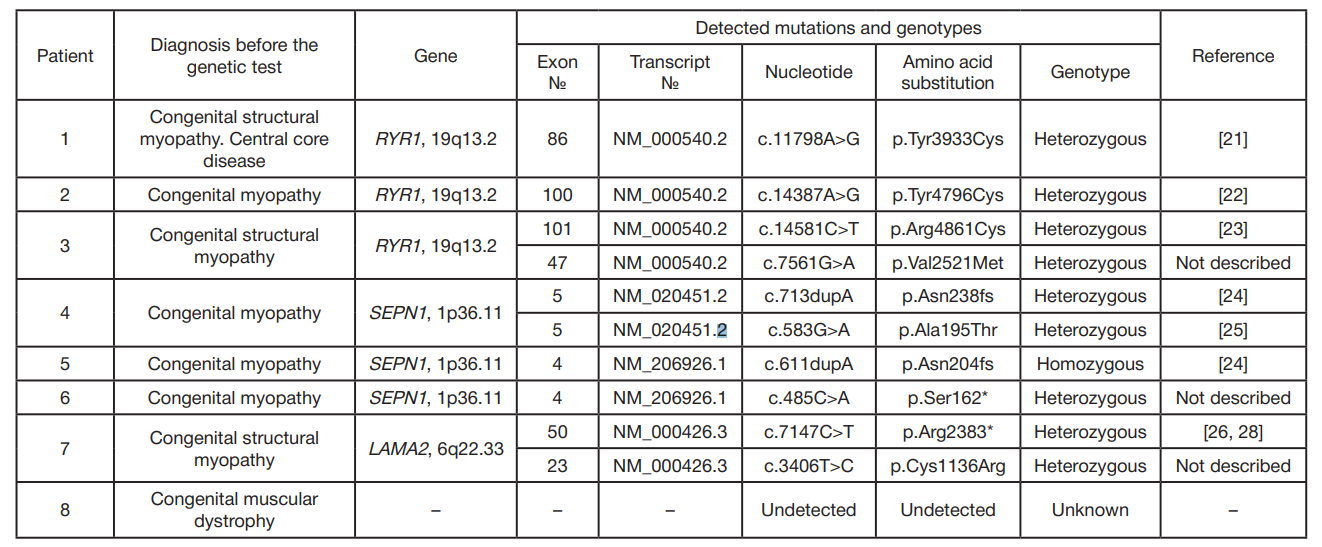
ORIGINAL RESEARCH
Clinical and molecular-genetic profiles of patients with morphological indications of congenital multicore myopathy
1 Pirogov Russian National Research Medical University, Moscow, Russia
2 Orekhovich Research Institute of Biomedical Chemistry, Moscow, Russia
3 Veltischev Research and Clinical Institute for Pediatrics, Pirogov Russian National Research Medical University, Moscow, Russia
4 Research Center of Neurology, Moscow, Russia
5 Genotek Ltd., Moscow, Russia
Correspondence should be addressed: Anastasia A. Kozina
Nastavnichesky per 17, bld. 1, Moscow, 105120; ur.ketoneg@rotcod
Author contribution: Kozina AA — literature analysis, analysis and interpretation of exome sequencing data, manuscript preparation; Shatalov PA — data acquisition, microscopy, manuscript preparation; Baranich TI — microscopy; Artemieva SB — medical histories and neurological examinations; Kupriyanova AG — clinical data acquisition; Baryshnikova NV — literature analysis, analysis and interpretation of exome sequencing data, manuscript preparation; Krasnenko AYu — exome sequencing; Ilinsky VV — exome sequencing; Sukhorukov VS — study design, data acquisition.
